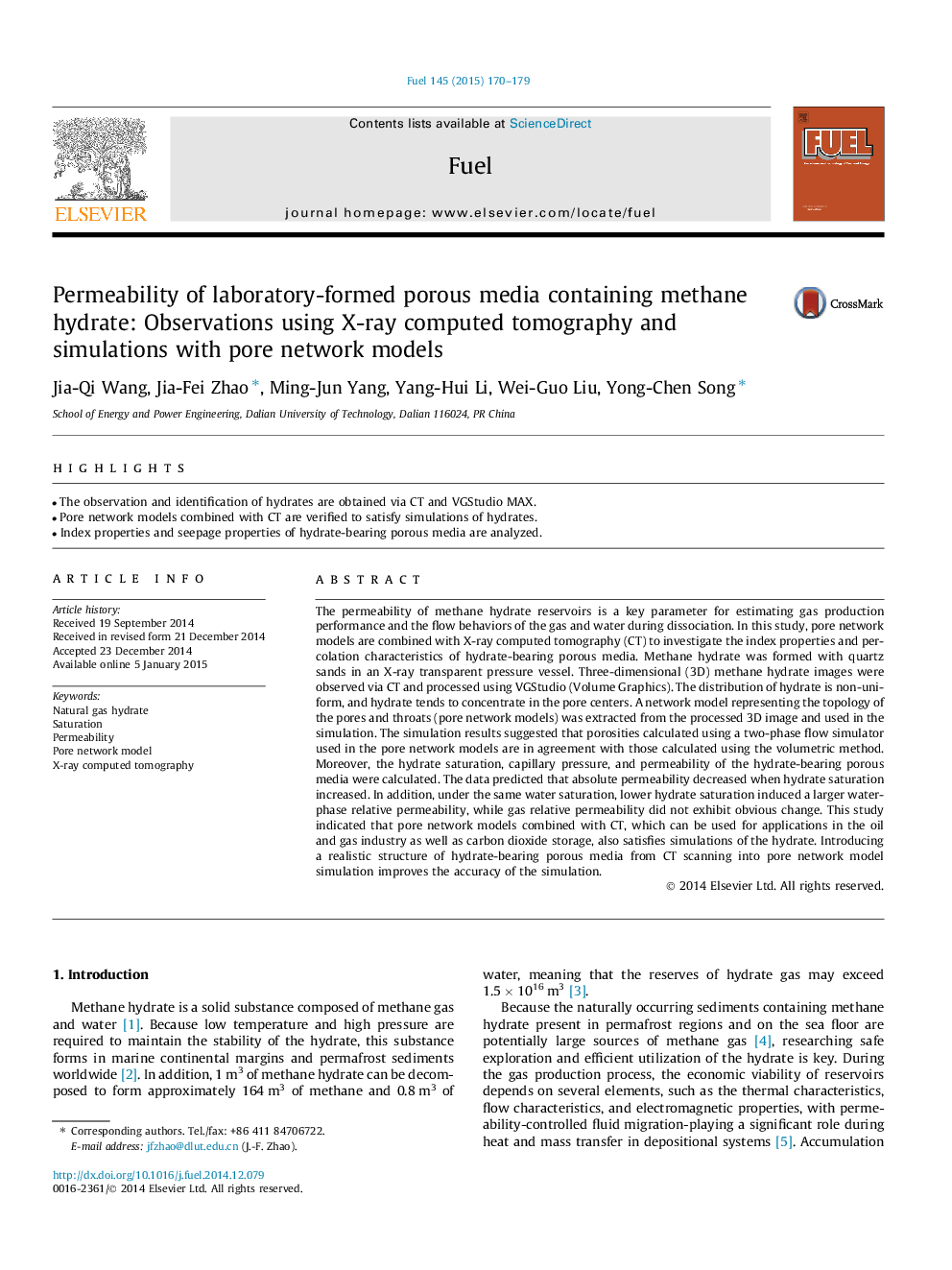| Article ID | Journal | Published Year | Pages | File Type |
|---|---|---|---|---|
| 205806 | Fuel | 2015 | 10 Pages |
•The observation and identification of hydrates are obtained via CT and VGStudio MAX.•Pore network models combined with CT are verified to satisfy simulations of hydrates.•Index properties and seepage properties of hydrate-bearing porous media are analyzed.
The permeability of methane hydrate reservoirs is a key parameter for estimating gas production performance and the flow behaviors of the gas and water during dissociation. In this study, pore network models are combined with X-ray computed tomography (CT) to investigate the index properties and percolation characteristics of hydrate-bearing porous media. Methane hydrate was formed with quartz sands in an X-ray transparent pressure vessel. Three-dimensional (3D) methane hydrate images were observed via CT and processed using VGStudio (Volume Graphics). The distribution of hydrate is non-uniform, and hydrate tends to concentrate in the pore centers. A network model representing the topology of the pores and throats (pore network models) was extracted from the processed 3D image and used in the simulation. The simulation results suggested that porosities calculated using a two-phase flow simulator used in the pore network models are in agreement with those calculated using the volumetric method. Moreover, the hydrate saturation, capillary pressure, and permeability of the hydrate-bearing porous media were calculated. The data predicted that absolute permeability decreased when hydrate saturation increased. In addition, under the same water saturation, lower hydrate saturation induced a larger water-phase relative permeability, while gas relative permeability did not exhibit obvious change. This study indicated that pore network models combined with CT, which can be used for applications in the oil and gas industry as well as carbon dioxide storage, also satisfies simulations of the hydrate. Introducing a realistic structure of hydrate-bearing porous media from CT scanning into pore network model simulation improves the accuracy of the simulation.
